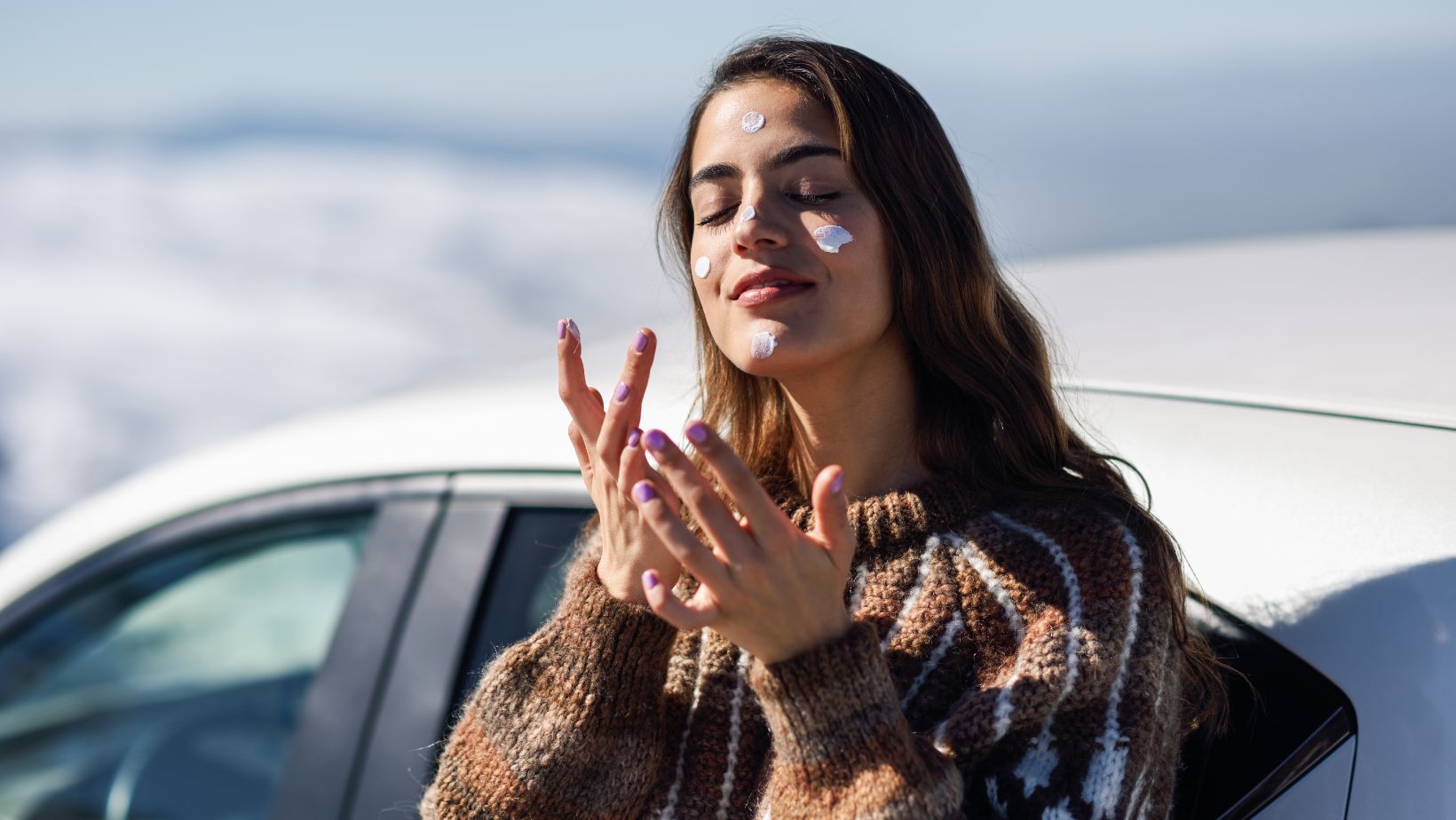Traveling to new destinations offers exciting opportunities for exploration and adventure, but it’s essential to prioritize sun protection to safeguard your skin from harmful UV rays.
Whether you’re lounging on a tropical beach, hiking in the mountains, or sightseeing in a bustling city, sunscreen should be a non-negotiable item in your travel essentials. To help you stay protected on the go, here are ten sunscreen tips for travelers:
Choose a Broad-Spectrum Sunscreen
When selecting a sunscreen for travel, opt for a broad-spectrum formula that provides protection against both UVA and UVB rays. UVA rays penetrate deep into the skin and can cause premature aging and skin cancer, while UVB rays primarily cause sunburn.
Look for sunscreens labeled as “broad-spectrum” with an SPF (Sun Protection Factor) of 30 or higher to ensure comprehensive protection against harmful UV radiation.
Pack Travel-Friendly Sunscreen
Travel-friendly sunscreen options such as travel-sized bottles, sticks, or wipes are convenient for on-the-go application and easy to pack in your carry-on luggage or daypack. Consider the duration and nature of your travels when choosing sunscreen packaging to ensure you have an adequate supply for your trip.
Remember to adhere to airline regulations for carrying liquids in your carry-on baggage to avoid any hassles at airport security checkpoints.
Apply Sunscreen Before Sun Exposure
To maximize sun protection, apply sunscreen generously to all exposed skin areas at least 15-30 minutes before sun exposure. Don’t forget to cover commonly overlooked areas such as:
- The ears
- Neck
- Scalp (if not covered by hair)
- Tops of feet
- Backs of hands
Reapply sunscreen every two hours or more frequently if swimming, sweating heavily, or towel drying, even on cloudy days or in shaded areas.
Use Water-Resistant Sunscreen for Water Activities
If your travel plans include water activities such as swimming, snorkeling, or surfing, opt for a water-resistant sunscreen formula that is specifically designed to withstand water exposure.
Water-resistant sunscreens provide longer-lasting protection and are less likely to wash off or degrade when exposed to moisture. Be sure to follow the manufacturer’s instructions for reapplication, as even water-resistant sunscreens can wear off with prolonged water contact or towel drying.
Practice Sun-Safe Habits
In addition to sunscreen application, practice sun-safe habits to minimize sun exposure and reduce the risk of sunburn and skin damage. Make it a priority to find shade whenever you can, particularly during the peak sun hours from 10 a.m. to 4 p.m. when UV radiation is at its most intense.
Wear protective clothing such as lightweight, long-sleeved shirts, wide-brimmed hats, and UV-blocking sunglasses to shield your skin and eyes from the sun’s harmful rays. Consider using sun-protective clothing with UPF (Ultraviolet Protection Factor) ratings for added sun protection.
Be Mindful of Altitude and Reflection
Keep in mind that altitude and reflective surfaces can increase your risk of sunburn and skin damage. UV radiation levels are higher at higher altitudes, such as when hiking in mountainous regions or skiing at high elevations.
Additionally, water, snow, sand, and concrete surfaces can reflect and amplify UV rays, leading to increased sun exposure and sunburn. Take extra precautions by applying sunscreen more frequently and wearing protective clothing and sunglasses in these environments.
Check Sunscreen Expiration Date
Before packing sunscreen for your travels, check the expiration date to ensure its efficacy and potency. Expired sunscreen may be less effective at providing sun protection and could increase the risk of sunburn and skin damage.
If your sunscreen has expired or shows signs of degradation, such as changes in color, texture, or smell, discard it and purchase a new bottle to ensure optimal sun protection during your travels.
Be Cautious with Sunscreen Application in Sensitive Areas
When applying sunscreen to sensitive areas such as the face, lips, and around the eyes, choose gentle, hypoallergenic formulas that are suitable for delicate skin. Use sunscreen lip balms with SPF protection to protect the lips from sunburn and chapping.
Be cautious when applying sunscreen around the eyes to avoid contact with the eyes and use sunscreen specifically formulated for the face to prevent clogged pores or skin irritation.
Respect Local Regulations and Customs
Before traveling to your destination, familiarize yourself with local regulations and customs regarding sunscreen use and availability. In some countries, certain sunscreen ingredients may be restricted or banned due to environmental concerns or health regulations.
Research local laws and regulations related to sunscreen use, purchase, and disposal to ensure compliance and avoid any issues during your travels.
Practice Sunscreen Safety and Environmental Responsibility
Practice sunscreen safety and environmental responsibility by choosing sunscreen formulas that are free of harmful chemicals such as oxybenzone, octinoxate, and octocrylene, which can damage coral reefs and marine ecosystems.
Opt for reef-safe, biodegradable sunscreens that use mineral-based UV filters such as zinc oxide or titanium dioxide, which are less harmful to the environment. Dispose of sunscreen packaging properly and avoid littering or contaminating natural habitats with sunscreen residues.
The Crucial Role of Sunscreen for Travelers
Sunscreen is an essential component of sun protection for travelers, helping to prevent sunburn, premature aging, and skin cancer while enjoying outdoor activities and exploring new destinations.
By choosing a broad-spectrum sunscreen, packing travel-friendly options, and applying sunscreen before sun exposure, travelers can stay protected on the go and enjoy their adventures under the sun safely and responsibly.

















